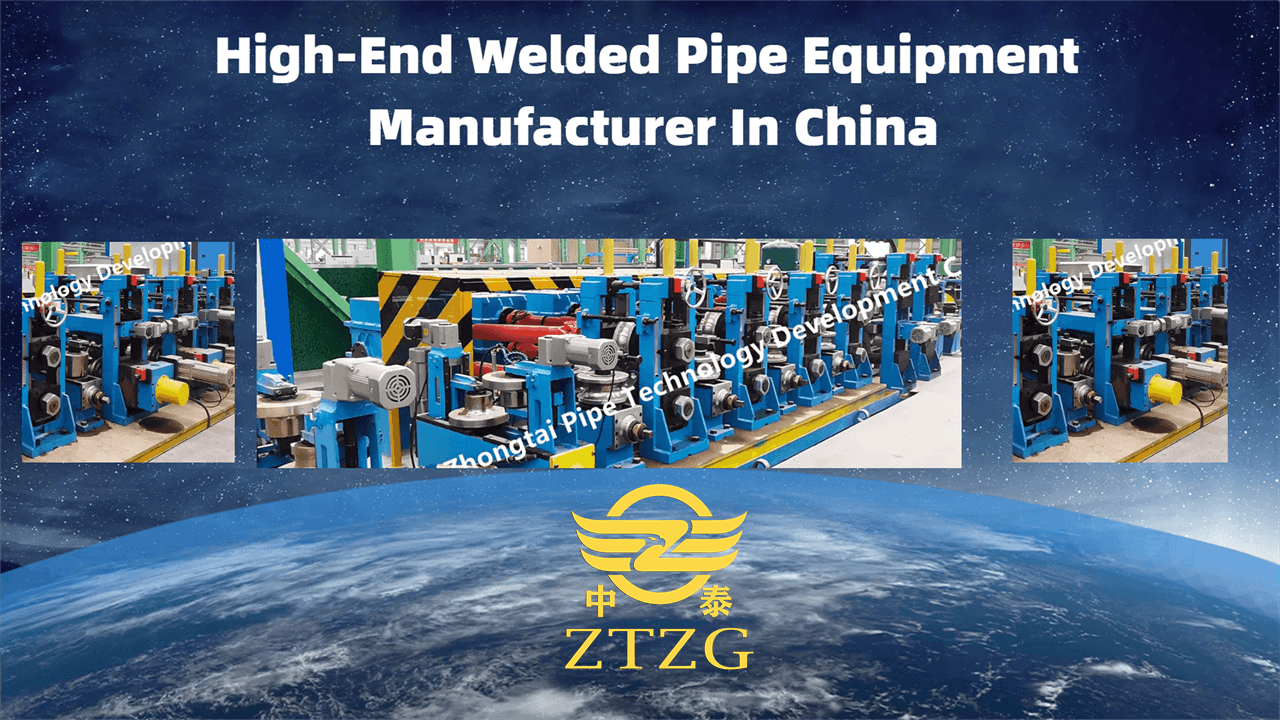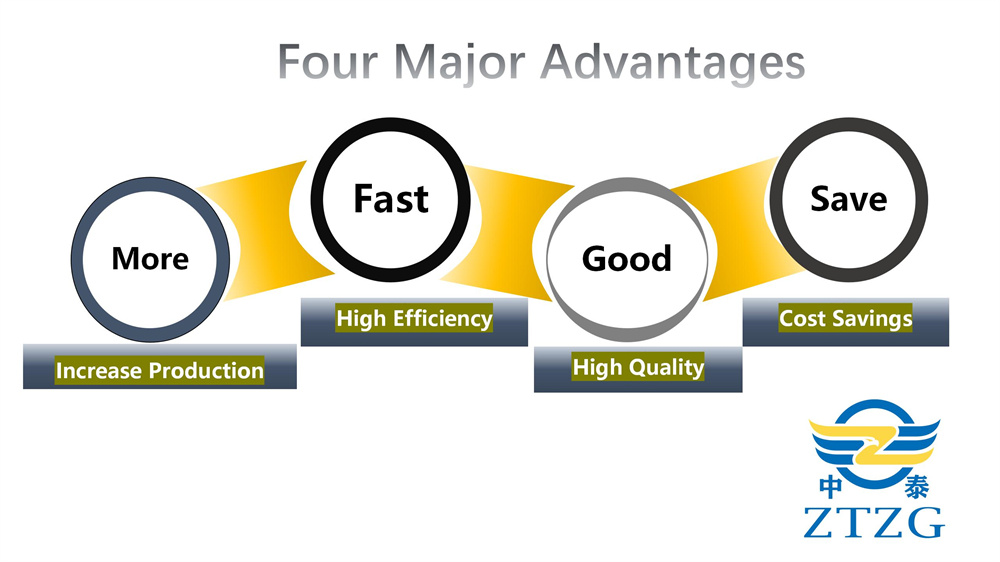1. Introduction
The pipe mill industry, as an important part of traditional manufacturing, faces increasing market competition and changing customer demands. In this digital age, the rise of artificial intelligence (AI) brings new opportunities and challenges to the industry. This article explores the impact of AI on the pipe mill sector and how AI technology can improve efficiency and open the door to a new era of intelligence.
With the rapid advancement of technology, AI is being applied more broadly across various fields. In the pipe mill industry, AI is playing an increasingly important role. AI not only enhances production efficiency and reduces costs, but also improves product quality and meets market demands. In today’s competitive market, pipe mill companies must keep pace with the times by actively adopting AI technology to achieve intelligent transformation.
2. What is AI and Its Relationship with Related Fields
2.1 AI Definition
Artificial Intelligence (AI) refers to a field of science that enables computers to “think” and “learn” like humans. By analyzing large amounts of data, AI simulates human cognitive processes to autonomously handle various tasks. For example, in image recognition, AI can learn from a vast number of images to understand the features of different objects and accurately identify content in new images.
2.2 The Relationship and Differences Between AI, Programming, and Robotics
Relationship: AI is implemented through programming, which provides the framework and tools for AI’s realization. Just as programming is the blueprint and construction tools for building a building, AI is the intelligent system within the structure. Robotics can become smarter with AI by integrating AI technology into robots, allowing them to better sense their environment, make decisions, and perform tasks. For example, industrial robots use AI to automatically detect and adjust production parameters, improving production efficiency and quality.
Differences:
- AI: Focuses on “teaching machines to think like humans” by learning and analyzing data to simulate human behaviors such as reasoning, decision-making, and learning. For instance, in natural language processing, AI can understand human language and perform tasks such as text analysis and machine translation.
- Programming: The process of writing code to create software and systems. Programmers use programming languages to write instructions that the computer follows to perform specific tasks. For example, to develop a web application, programmers use HTML, CSS, and JavaScript to design the page layout, style, and interactive functions.
- Robotics: Refers to machines that can perform tasks, often controlled through programming, but not necessarily involving AI. Without AI, robots can only perform fixed actions, similar to traditional automation devices. With AI, robots can sense their environment, learn, and make decisions to perform more complex tasks, such as personalized services by service robots.
3. How AI Understands Images
AI’s understanding of images is similar to how humans recognize objects. The process begins with data preprocessing, including image reading, normalization, and cropping, to provide an accurate foundation for analysis. In traditional methods, feature extraction is manually designed, but with deep learning, neural networks automatically learn higher-level and abstract features from large datasets, such as convolutional layers in Convolutional Neural Networks (CNN). After extracting features, AI performs feature representation and encoding, using methods like vector representation and feature hashing for subsequent classification and retrieval.
In the pipe mill industry, AI’s image understanding capabilities have critical applications. For instance, AI vision technology can accurately detect pipe dimensions, surface quality, and thickness. The process begins with image preprocessing to ensure quality and consistency. Then, AI extracts features like color and shape from the pipe image. After that, feature encoding allows for classification and recognition. Based on the learned model, AI can detect defects in pipes and trigger alarms or adjustments to ensure stable product quality.
4. The Role of AI Trainers
AI trainers act like teaching assistants. They provide AI with many examples, label images, point out errors, and help AI correct them.
In the pipe mill industry, AI trainers play an important role in collecting data related to pipe mill machines, including images and production parameters. Trainers use data cleaning, standardization, and transformation techniques to ensure data accuracy. They also ensure data diversity and completeness to help AI models better adapt to different tasks and scenarios.
Trainers design machine learning models suitable for the pipe mill industry, including classification models to differentiate pipe quality levels and regression models to predict how production parameters affect pipe quality. Once enough data is collected and models are designed, trainers use substantial computational resources to train the models, constantly monitoring performance and making adjustments as needed.
After training, AI models are evaluated using metrics like accuracy, recall, and F1 scores. Trainers use these evaluations to identify strengths and weaknesses, optimize the model, and integrate it into production systems.
5. Why AI Needs Human Support
Despite AI’s powerful computational and learning capabilities, it doesn’t inherently understand what is right or wrong. Like a child who needs guidance, AI requires human supervision and training data to improve and grow. In the pipe mill industry, data annotators and AI trainers provide essential learning material to teach AI to recognize different features and patterns in pipe production.
Humans must also supervise and adjust AI’s learning process, correcting errors or biases when they occur. As the industry evolves, humans continually provide new data to ensure AI adapts to new production requirements.
6. The Impact of AI on the pipe mill Industry
Reducing Labor Intensity
AI can perform repetitive, dangerous, and high-intensity tasks, such as controlling pipe mill machines, reducing manual operation frequency and improving efficiency and safety.
Improving Product Quality
AI’s vision and sensor technology precisely monitors pipe details, ensuring consistent quality. Additionally, AI optimizes production parameters to enhance production efficiency.
Reducing Costs and Increasing Efficiency
AI reduces material waste by precisely controlling cutting and processing methods, lowering production costs. Moreover, automated production reduces labor costs.
Meeting Market Demands and Enhancing Competitiveness
AI ensures product quality consistency, enhancing customer trust and market share. It also allows flexible production, quickly adjusting specifications to meet diverse customer needs.
Supporting Sustainable Development
AI nables energy optimization and waste reduction, helping companies achieve sustainable production goals.
7. AI Applications in the pipe mill Industry
Data Collection and Integration AI automates the collection of customer data from various channels, helping businesses understand customer behavior and preferences.
Customer Insights and Segmentation AI analyzes customer data to identify different segments, enabling companies to develop personalized strategies based on specific industry needs.
Content Personalization AI automatically generates personalized content based on customer behavior, improving engagement and conversion rates.
8. Conclusion
AI plays a significant role in transforming the pipe mill industry, offering advantages such as reducing labor intensity, improving product quality, lowering costs, boosting competitiveness, and promoting sustainability. With AI, the pipe mill industry is entering a new intelligent era.
Post time: Dec-13-2024














